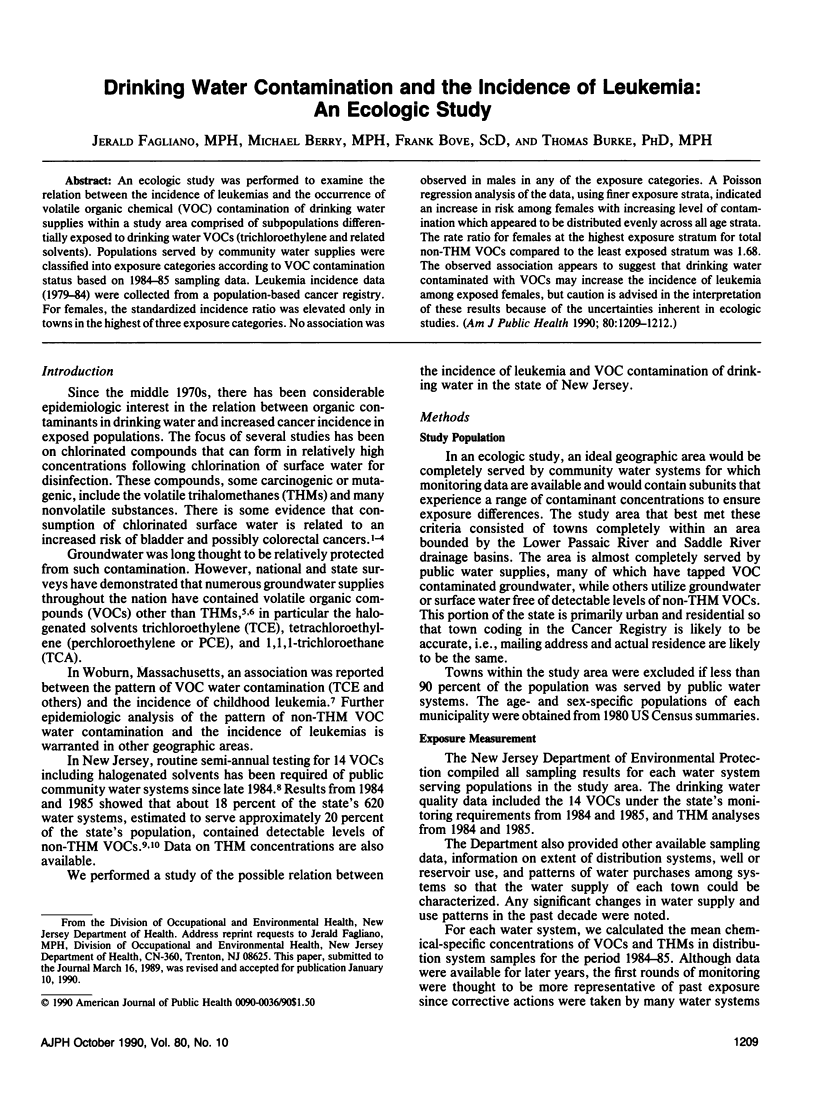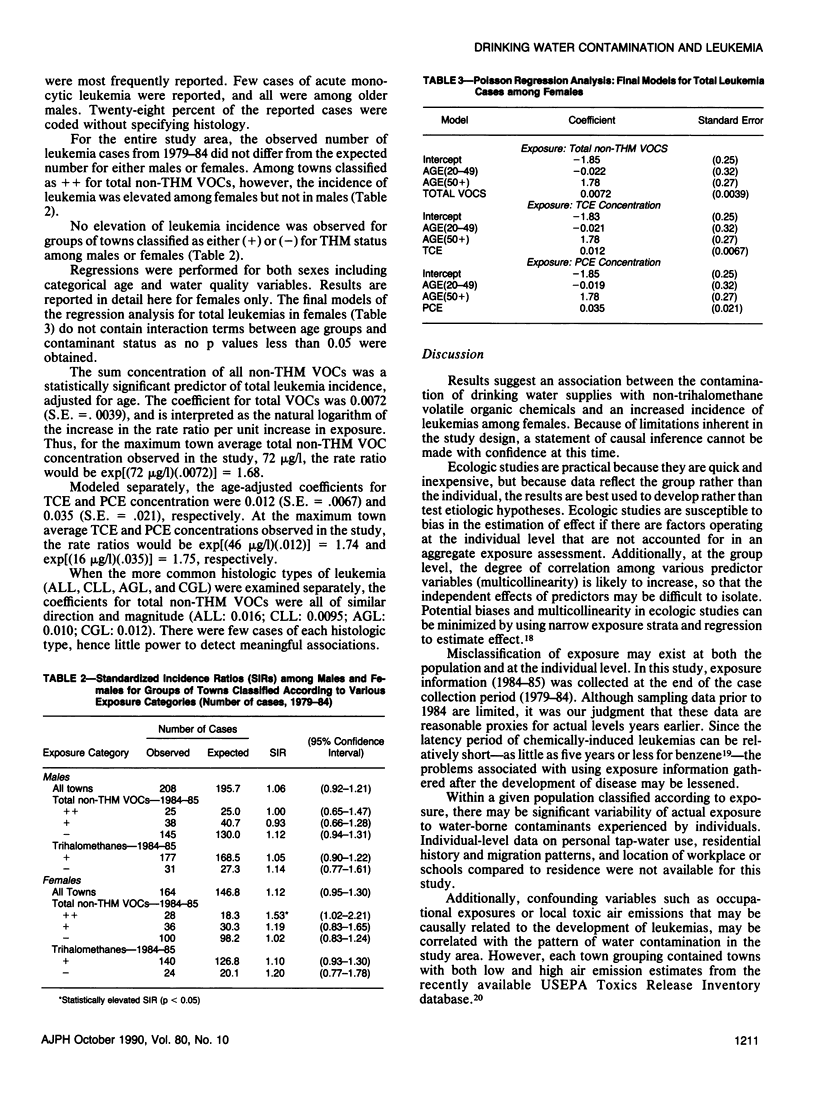Abstract
An ecologic study was performed to examine the relation between the incidence of leukemias and the occurrence of volatile organic chemical (VOC) contamination of drinking water supplies within a study area comprised of subpopulations differentially exposed to drinking water VOCs (trichloroethylene and related solvents). Populations served by community water supplies were classified into exposure categories according to VOC contamination status based on 1984-85 sampling data. Leukemia incidence data (1979-84) were collected from a population-based cancer registry. For females, the standardized incidence ratio was elevated only in towns in the highest of three exposure categories. No association was observed in males in any of the exposure categories. A Poisson regression analysis of the data, using finer exposure strata, indicated an increase in risk among females with increasing level of contamination which appeared to be distributed evenly across all age strata. The rate ratio for females at the highest exposure stratum for total non-THM VOCs compared to the least exposed stratum was 1.68. The observed association appears to suggest that drinking water contaminated with VOCs may increase the incidence of leukemia among exposed females, but caution is advised in the interpretation of these results because of the uncertainties inherent in ecologic studies.
Full text
PDF



Selected References
These references are in PubMed. This may not be the complete list of references from this article.
- Blair A., Decoufle P., Grauman D. Causes of death among laundry and dry cleaning workers. Am J Public Health. 1979 May;69(5):508–511. doi: 10.2105/ajph.69.5.508. [DOI] [PMC free article] [PubMed] [Google Scholar]
- Cantor K. P., Hoover R., Hartge P., Mason T. J., Silverman D. T., Altman R., Austin D. F., Child M. A., Key C. R., Marrett L. D. Bladder cancer, drinking water source, and tap water consumption: a case-control study. J Natl Cancer Inst. 1987 Dec;79(6):1269–1279. [PubMed] [Google Scholar]
- Greenberg R. S., Kleinbaum D. G. Mathematical modeling strategies for the analysis of epidemiologic research. Annu Rev Public Health. 1985;6:223–245. doi: 10.1146/annurev.pu.06.050185.001255. [DOI] [PubMed] [Google Scholar]
- Lowengart R. A., Peters J. M., Cicioni C., Buckley J., Bernstein L., Preston-Martin S., Rappaport E. Childhood leukemia and parents' occupational and home exposures. J Natl Cancer Inst. 1987 Jul;79(1):39–46. [PubMed] [Google Scholar]
- Morgenstern H. Uses of ecologic analysis in epidemiologic research. Am J Public Health. 1982 Dec;72(12):1336–1344. doi: 10.2105/ajph.72.12.1336. [DOI] [PMC free article] [PubMed] [Google Scholar]
- Rinsky R. A., Smith A. B., Hornung R., Filloon T. G., Young R. J., Okun A. H., Landrigan P. J. Benzene and leukemia. An epidemiologic risk assessment. N Engl J Med. 1987 Apr 23;316(17):1044–1050. doi: 10.1056/NEJM198704233161702. [DOI] [PubMed] [Google Scholar]
- Young T. B., Wolf D. A., Kanarek M. S. Case-control study of colon cancer and drinking water trihalomethanes in Wisconsin. Int J Epidemiol. 1987 Jun;16(2):190–197. doi: 10.1093/ije/16.2.190. [DOI] [PubMed] [Google Scholar]
- Zierler S., Feingold L., Danley R. A., Craun G. Bladder cancer in Massachusetts related to chlorinated and chloraminated drinking water: a case-control study. Arch Environ Health. 1988 Mar-Apr;43(2):195–200. doi: 10.1080/00039896.1988.9935853. [DOI] [PubMed] [Google Scholar]


